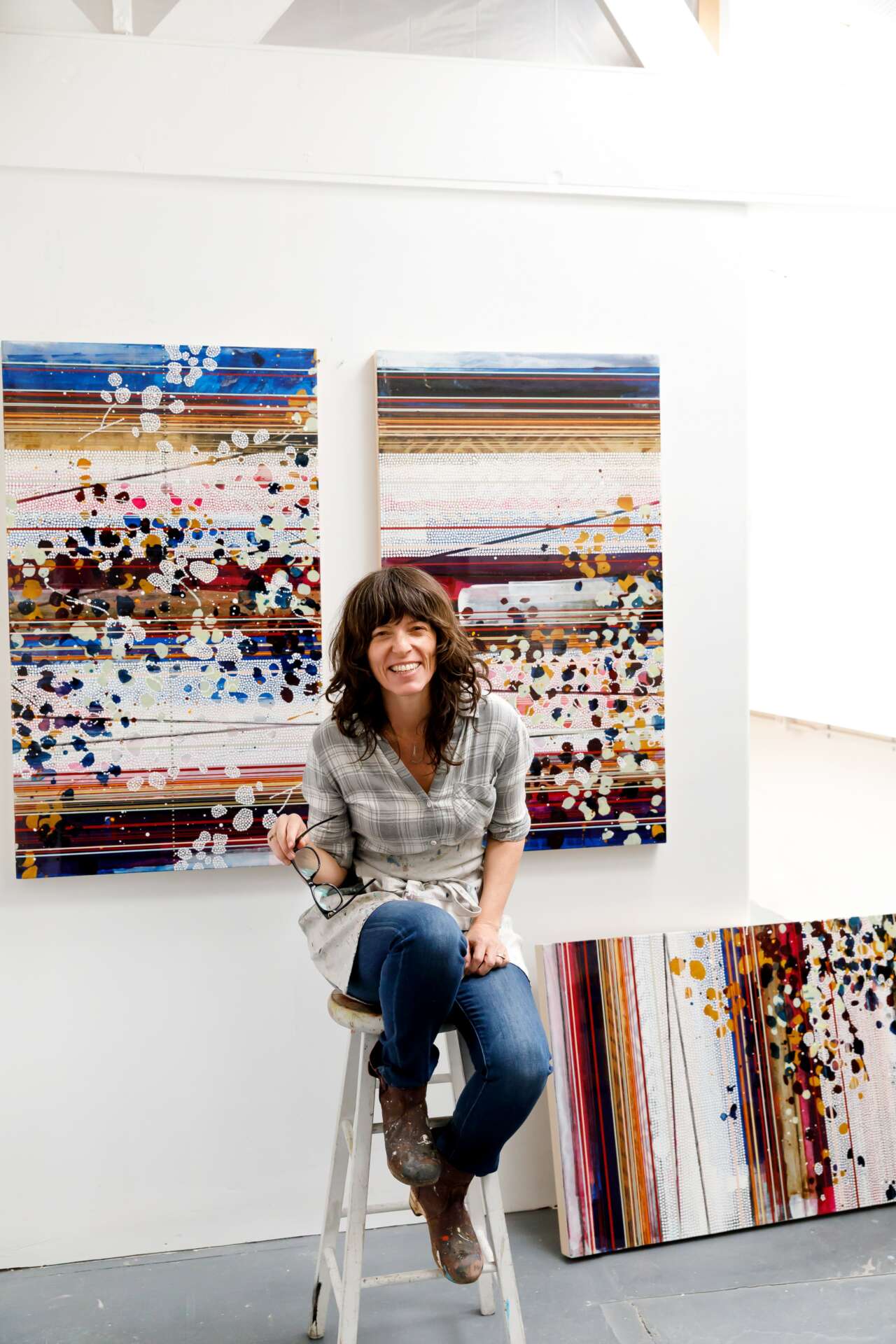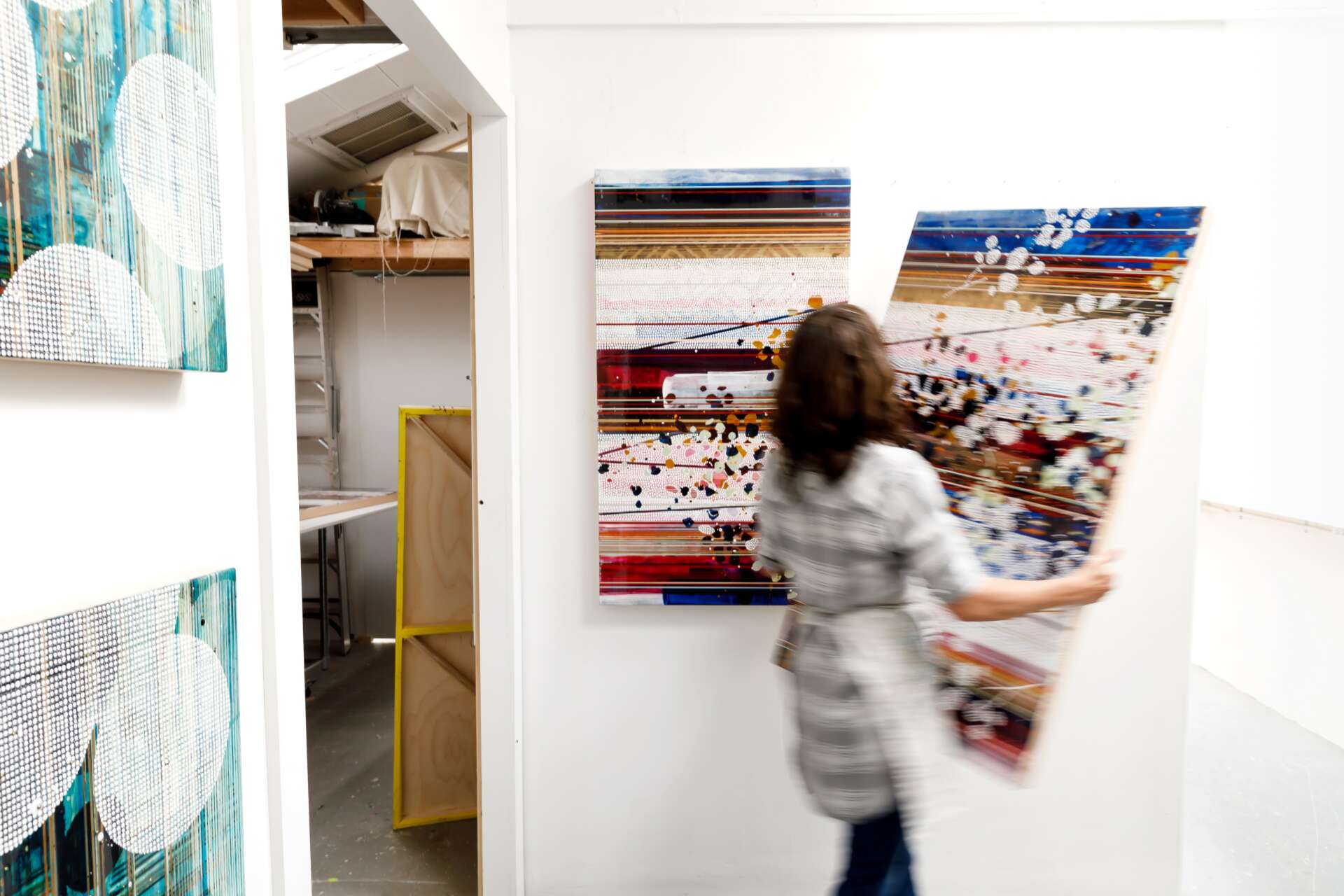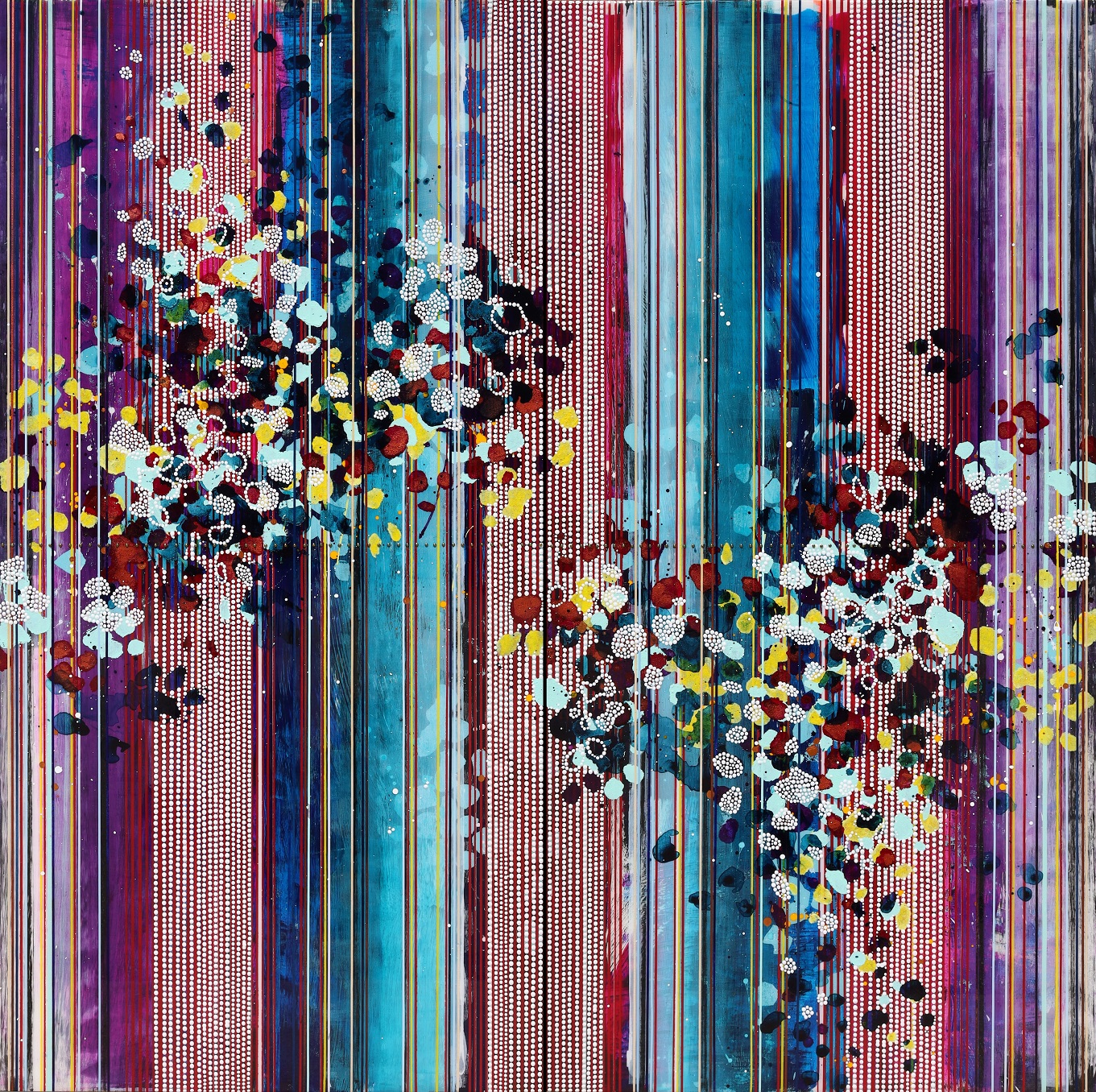We recently connected with Nina Tichava and have shared our conversation below.
Nina, appreciate you joining us today. How did you learn to do what you do? Knowing what you know now, what could you have done to speed up your learning process? What skills do you think were most essential? What obstacles stood in the way of learning more?
I’ve really been artistic since childhood. My mother was a weaver and designer, and my father was an amateur photographer, so I learned early on to express myself with art and making. I was in art clubs in high school and took studio classes as well as art history in early college. In my twenties, I decided to attend a dedicated art school, which is where I fell in love with painting. After graduation, I prioritized getting a studio space and committed to making art daily while working at night as a waitress.
Looking back, I think that dedicating even more time to painting would be one thing I would do differently. Developing a style and a solid working method can take many years to accomplish, and more focus would have sped things up significantly. I also would have spent more time applying to group shows, publications and residencies to get more exposure for my work and to network with artists and institutions.
Dedication, practice and resilience are essential skills to possess as an independent artist. There are so many rejections and disappointments in this industry, you really need the ability to rebound and get excited about getting into your studio to make the next painting.
Time and financial resources have been the biggest obstacles to learning more. I would love to explore different mediums, to travel to programs outside of my area, and to take on more community-based projects. But as a self-supporting, professional artist, my showing schedule really has to take precedence over learning more skills.


As always, we appreciate you sharing your insights and we’ve got a few more questions for you, but before we get to all of that can you take a minute to introduce yourself and give our readers some of your back background and context?
I am a professional painter; my work is best described as abstract painting with botanical and architectural references, as the pieces suggest natural forms (birds, leaves, branches), man made structures (buildings, windows, lights) and patterning both natural and designed (woven fabrics, strata of earth, pixels).
I started exhibiting my paintings after graduating from art school in 2003, slowly building relationships until ultimately working with a number of fine art galleries nationally. I’m in a number of private, corporate and public collections, and received a Pollock Krasner Foundation Award in 2007. My work has been exhibited in many national art fairs including: Miami, Los Angeles, Palm Springs, Dallas, New York, Aspen, Seattle and San Francisco. I currently show with galleries in Dallas, Houston, Denver, Los Angeles, Park City, Utah and Jackson, Wyoming.
Alright – so here’s a fun one. What do you think about NFTs?
In addition to my physical paintings, I also have an NFT program. It’s a compelling space to be involved with right now, and I’m spending as much time learning as I can find while in full production mode in my studio. I tend to seek out complexity and am most happy working on many projects at once, and this is an area that I think has amazing growth potential.
I fully embrace digital and social media—it ties back to the culture of my art school as well as my own opinion: art can be anything you want it to be, and the traditional categories of painting, photography, digital media, etc. are all overlapping in beautiful ways. I think that a physical piece seen in person is going to be a different experience than the one you have on a phone or computer, but I do not categorize one as being better or worse than another—they are just different. Being an art maker in the past 10 years has really bridged physical and digital spaces, and especially the last two years in a pandemic…I don’t know how I would have survived without a digital and social community. It is exciting to have my work seen by a larger and more diverse audience, especially globally. The barriers to exhibiting in physical spaces can be very intimidating, and online sharing really does equalize is so many ways. I am also inspired daily by artists and creators I follow online, and have built real relationships with so many people and institutions. I cannot imagine being a contemporary artist without digital interactions.


How did you build your audience on social media?
I’ve always felt that social media is a powerful tool, but one that is best used in targeted ways. As a busy and sensitive person, I only have the bandwidth for a limited amount of social media, so I try to make it as quality as possible. I have used Instagram for years, and have found it to be the best tool for getting my work in front of a buying audience, and for building my personal brand. I’m careful with the images I post, making sure my photos are professional-looking and engaging. I keep my social feeds positive and supportive, and do my best to follow the work of other creatives in my field. My strategy has been a “slow and steady” approach, being content with a small but steady number of new followers over time.
My best advice is to be authentic, be kind and use spell check! Also, look at other creatives you might know to see how they might be handling their audience and interactions, and to support their work.
Contact Info:
- Website: www.ninatichava.com
- Instagram: @ninaforplace
- Facebook: Nina Tichava, Nina Tichava Artist Page
- Twitter: @NinaForPLACE
Image Credits
Photo credit Shana Berenzweig


